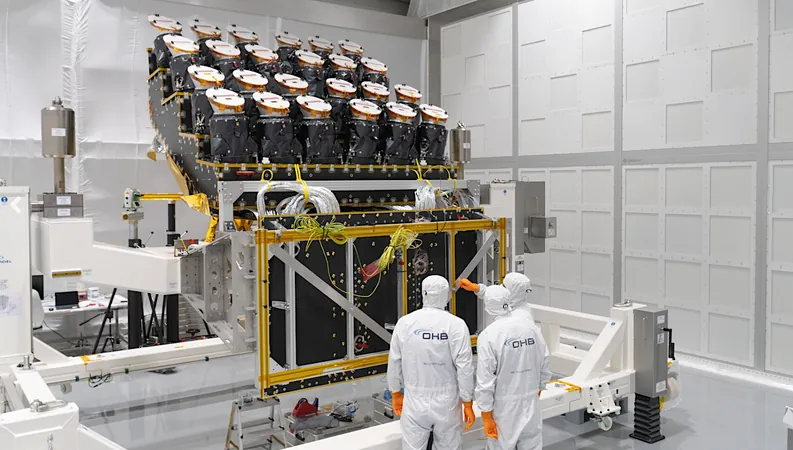
Plato Takes Shape: Cameras Installed on Groundbreaking Exoplanet Hunter
2025-05-14
Author: Sarah
A Giant Leap for the Plato Mission
Excitement is building as the European Space Agency’s ambitious Plato mission inches closer to launch! With 24 out of 26 sensitive cameras installed on the spacecraft, Plato is gearing up to become our eyes in the sky, on a quest to find Earth-like planets.
Engineering Marvel: 24 Cameras in Place!
The installation of these vital cameras is taking place at OHB in Germany, where engineers are fine-tuning the optical bench that holds them. In just weeks, the final two high-speed cameras will be added, enabling Plato to capture even more data efficiently.
Searching for Habitable Worlds
Plato's innovative multi-camera setup allows it to simultaneously scan large swathes of the night sky for exoplanets orbiting stars similar to our Sun. Project manager Thomas Walloschek states, "Seeing Plato come together has been incredibly rewarding; the alignment of these cameras is crucial for our mission's success."
The Science Behind the Hunt
These cutting-edge cameras are designed to detect minor fluctuations in starlight. When an exoplanet moves in front of its star, it causes a dimming effect that Plato will identify and analyze, leading to the discovery of new worlds! But that's not all—Plato will also deepen our understanding of stellar behavior by observing 'starquakes'—subtle changes that reveal a star’s internal structure and age.
A Broader View: Exploring 200,000 Stars!
The sophisticated design of Plato’s cameras includes four groups, each containing six perfectly aligned lenses that will collectively observe about 5% of the sky. Over its mission lifespan, Plato will analyze more than 200,000 stars, providing insights into their potential to host life.
Powering the Future of Space Exploration
In tandem with the assembly of the cameras, engineers are also building Plato’s service module. This essential component manages the spacecraft's electronics and systems needed for orientation, propulsion, power distribution, communication with Earth, and data handling.
What's Next for Plato?
The next major milestone in the mission will be the joining of the service module with the payload module housing the cameras, slated for summer. This collaboration involves the combined expertise of ESA and various European research institutions, ensuring that Plato is a top-tier instrument for astrobiology and exoplanet research.


 Brasil (PT)
Brasil (PT)
 Canada (EN)
Canada (EN)
 Chile (ES)
Chile (ES)
 Česko (CS)
Česko (CS)
 대한민국 (KO)
대한민국 (KO)
 España (ES)
España (ES)
 France (FR)
France (FR)
 Hong Kong (EN)
Hong Kong (EN)
 Italia (IT)
Italia (IT)
 日本 (JA)
日本 (JA)
 Magyarország (HU)
Magyarország (HU)
 Norge (NO)
Norge (NO)
 Polska (PL)
Polska (PL)
 Schweiz (DE)
Schweiz (DE)
 Singapore (EN)
Singapore (EN)
 Sverige (SV)
Sverige (SV)
 Suomi (FI)
Suomi (FI)
 Türkiye (TR)
Türkiye (TR)
 الإمارات العربية المتحدة (AR)
الإمارات العربية المتحدة (AR)